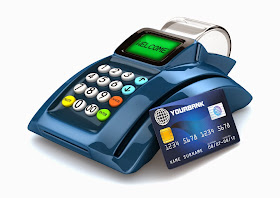How It was done. You will be surprised that all the tools used where known!
Article first published 1/23/2014 as "Target Data Breach Unveiled: Technical Details Are Known" in Yahoo! Contributors/ABC News Network.
This article won the "Best General Interest Article in 2014", General- Category by Yahoo Contributors Users.
The US government in an effort to warn other point of sale merchants of the potential danger of more attacks that will provide another wave of "Target like" customer victims, have released an internal document where detailed insight of the methodology used by attackers of the Target data breach is revealed. The consulting firm iSIGHT Partners was one of the investigative contracted forensics experts. The US Department of Homeland Security released to merchants a joint Department of Homeland Security, USSS, FS-ISAC and iSIGHT report titled "KAPTOXA POS Report" where we get a look at an insight of the methods and tools used to hack Target. Hopefully, merchants will take notice and immediately take preventive measures.
The methodology used at Target was almost exactly as I
predicted in our original exclusive December 26, 2013 “ The
Target Stores Data Breach ” Yahoo! article, right after the hack. Journalist
Brian Krebs was also right on target when he mentioned at that time that
the hack might have been based on a known trojan virus called BlackPos that is
readily detected by all anti-virus software. The updated modified version of BlackPos
trojan used in the Target breach is named Trojan.POSRAM, this derivative is
highly sophisticated in stealth features in order to hide to prevent detection.
POSRAM is believed to have originated in Russia .
When we compile the information given by the report and the
media, specially an article in the Wired publication named “The
Malware that Duped Target Have Been Found”, we come close to figure out
the order of events in the Target data breach. First, the merchant network system
is infiltrated with the malware, possibly remotely, exploiting an opening in
the system or by executing a simple human engineering exploit. The malware is a
data scrapping tool that takes data from the memory of the point of sale
terminal (POS) or what we know as the cash register. This tool will reside in
the system and will store the stolen data inside the merchant’s servers. The
tool will monitor the data in the files named “pos.exe" and "PosW32.exe”; these
files contain the memory space that includes magnetic strip data of your bank
card. In the Target's breach event it remained still for six days. That inactivity period is excellent to prevent detection.
The residing malware in the merchant creates a connection to
an out of the premises server that receives and transmits data to the victim
server. The outside server, can be located anywhere, in the world, and, queries
the victim server at specific time intervals. This one was located in Russia. Some of the malicious scripts used have references in Russian language. If the local merchant time is for
example between 10 AM and 5 PM, as it is used in the old BlackPos tool, then
the data is deposited in an a temporary
NetBIOS share “host” folder created by the malware. This share folder is then
accessed using file transfer protocol (FTP). Many more complex technical
details have been found by the media in just a few hours after the release of
the KAPTOXA POS Report. All the
details follow the same pattern; surprisingly, modified known exploits where
used at all times.
KAPTOXA is the name
given by investigators to the specific operation methodology and compilation of
hacking tools in the Target data breach. Nothing in
the KAPTOXA operation is out of the ordinary. Probably the other tools used in
the hack are already known in the trade. It is not that the criminals used
super sophisticated malware, it is the way and the timing they where used. The
fact that known hacking tools where used will open the doors to a wave of
lawsuits that will claim that the merchants could have prevented the hack; this
is one of the reason that the government has taken the unprecedented steps of
releasing some of the facts and data about the crime before even finishing the
investigation. Merchants should verify their systems immediately. Victimized stores should consider making public their breach ASAP. The more time
the notifications to affected customers passes by, the higher the lawsuit
figures will be and more damage to the customer is made.
Two individuals from Mexico
were arrested in McAllen , Texas South Texas
residents. After the shopping spree, the suspects left for Mexico . They entered the US again possibly, for another
shopping spree. They where detained upon arrival. This event confirms that the
stolen data is sold in the illicit market by regions. Criminals are maximizing the use of the stolen data by being very creative. Regardless of Target's downplay efforts to minimize the impact, a customer can be a victim of identity theft with the specific data stolen at Target.

No comments:
Post a Comment